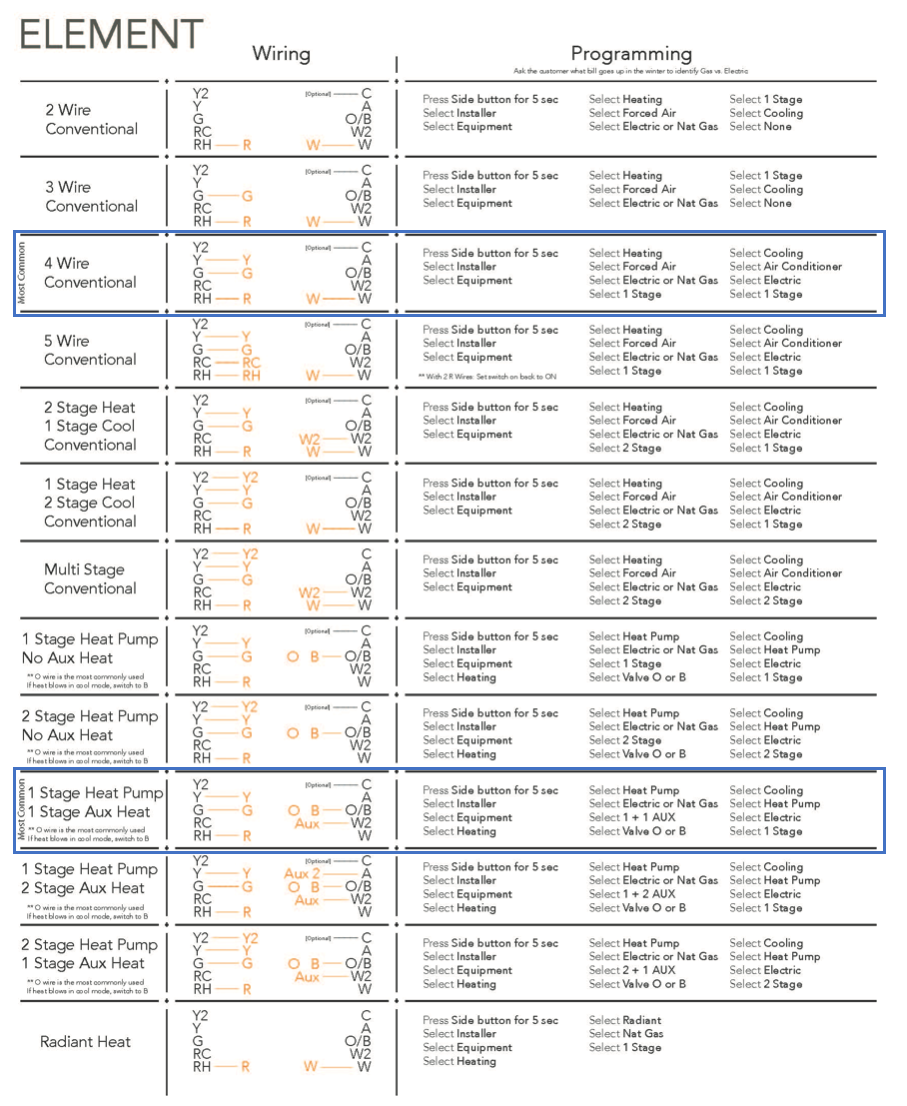How do I test my vivint thermostat?
Summary
As part of a Vivint system, the Nest thermostat makes it easy to control temperatures while keeping home comfortable. This intuitive thermostat can change temperature based on home occupancy, conserving energy, and reducing utility costs.
Key Points
1. What kind of thermostat does vivint use?
As part of a Vivint system, the Nest thermostat makes it easy to control temperatures while keeping home comfortable. This intuitive thermostat can change temperature based on home occupancy, conserving energy, and reducing utility costs.
2. How much does a vivint thermostat cost?
Vivint Smart Thermostat costs $170 with a financing plan of $2.83 per month for 60 months. Other components include a Lamp Module for $50 ($0.83 per month) and Vivint Doorbell Camera Pro for $250 ($4.17 per month).
3. What is the power requirement for vivint thermostats?
The Vivint thermostat is designed for use with 4x AA alkaline batteries and/or a 24-volt AC C wire or a 12-24 AC or DC source. Each thermostat relay load should be limited to 1.0 amp to avoid damage.
4. How do you set the target temperature on a vivint thermostat?
Adjust the target temperature on the Vivint Smart Thermostat using the up and down arrows on the face of the thermostat. The current and target temperature will be displayed on the illuminated faceplate.
5. What is the difference between a thermostat and a smart thermostat?
A regular thermostat allows you to adjust the temperature via a control panel, while a smart thermostat offers additional features such as remote control and energy-saving capabilities.
6. Which sensor controls the thermostat?
A thermostat sensor, also known as an air conditioning sensor, measures the ambient air temperature and works with the thermostat to control the indoor temperature of your home.
7. What is the lifespan of a digital thermostat?
Modern digital thermostats have a lifespan of about 10 years but are often replaced sooner due to advancements in the market. Non-programmable thermostats are being replaced by programmable or learning thermostats.
8. How often should you replace a digital thermostat?
The average lifespan of a home thermostat is 10 years, but replacement may be necessary sooner with the introduction of more efficient options. Consider replacing a non-programmable thermostat with a programmable one.
9. How do I test my thermostat for power?
To test the power of your thermostat, turn on the blower motor in high speed and measure the voltage between the Y and C terminals. A reading of 27.6 volts indicates proper functionality.
10. What sends power to my thermostat?
The heating and cooling wires, labeled Rc and Rh, provide the 24V power source to the HVAC control board, which then powers the thermostat.

What kind of thermostat does vivint use
As part of a Vivint system, the Nest thermostat makes it easy to control temperatures while keeping home comfortable. This intuitive thermostat can change temperature based on home occupancy, conserving energy, and reducing utility costs.
How much does a vivint thermostat cost
Vivint Package Pricing
| Component | Retail price | Cost per month with 60-month financing plan |
|---|---|---|
| Vivint Smart Thermostat | $170 | $2.83 |
| Lamp Module | $50 | $0.83 |
| Vivint Doorbell Camera Pro | $250 | $4.17 |
| Outdoor Camera Pro | $400 | $6.67 |
What is the power requirement for vivint thermostats
Details & Specifications
CAUTION: This thermostat is designed for use with 4x AA alkaline batteries and/or 24-volt AC C wire (or a 12- 24 AC or DC source) or millivolt gas systems. Each thermostat relay load should be limited to 1.0 amp; higher amperage can cause damage to the thermostat.
How do you set the target temperature on a vivint thermostat
You can use the up and down arrows on the face of the Vivint Smart Thermostat to adjust the target temperature. When adjusting the temperature, the faceplate will illuminate to reveal the current and target temperature. The large number is the target temperature and the smaller number is the current temperature.
What is the difference between a thermostat and a smart thermostat
What Is a Smart Thermostat A regular thermostat allows you to adjust the temperature via a control panel on the wall somewhere in your home. A smart thermostat, on the other hand, allows you to control so much more. Smart thermostats give you the opportunity to not only control your heating and cooling.
Which sensor controls the thermostat
Also known as an air conditioning sensor, a thermostat sensor is a component in central AC systems that is designed to measure the ambient air temperature. It works in conjunction with a thermostat to provide control over your home's indoor temperature.
What is the lifespan of a digital thermostat
Modern home thermostats tend to have about a 10-year lifespan but are usually replaced sooner due to innovations in the market. Non-programmable thermostats have become outdated and replaced by programmable (or learning) thermostats.
How often should you replace a digital thermostat
The lifespan of most home thermostats is 10 years. However, you may need to replace yours sooner as newer, more efficient thermostats enter the market. You may, for instance, want to replace a non-programmable thermostat with a programmable option.
How do I test my thermostat for power
The basically the blower motor to turn on in high speed. Now we're gonna read our voltage. From Y to C. And you see that we are reading 27 point 6 volts. So that is working properly.
What sends power to my thermostat
While some people think the C wire is what powers the thermostat, this isn't entirely true. Typically, the "hot" wires, or the wires that provide power to the unit, are the heating and cooling wires, labeled Rc and Rh respectively. They provide the source of 24V power that comes into the main HVAC control board itself.
Why is my thermostat not reaching target temp
Your Vents Are Blocked
Your thermostat will not be able to reach your desired temperature if you have something blocking the vents. Check the vents around your home and make sure you do not have any items such as furniture in the way of your vent's airflow. While you're at it, make sure all of your vents are open.
At what temperature should the thermostat be set
What temperature should you keep your house at Or better yet, “What is the most energy saving temperature to set my thermostat at” According to ENERGYSTAR.gov, the ideal home temperature should be between 70 to 78 degrees Fahrenheit.
What are the disadvantages of a smart thermostat
CONS:Smart Thermostats Can Be Expensive. The cost of a normal digital thermostat can be as low as $30.00 but many smart thermostats can be a bit more expensive.Installation Can Be Daunting For Some.Security Can Be An Issue.
Do you need internet to use a smart thermostat
A smart thermostat will still dispense the basic functionalities of cooling and heating even with no internet connection. However, your thermostat will need reconnecting to the internet for remote control, monitoring, and live updates.
How do I know if my thermostat or sensor is bad
8 Signs of a Faulty Coolant Temperature SensorEngine Overheating.Illuminated Check Engine Light.Black Smoke from Exhaust.Difficulty Starting the Car.Fluctuating Temperature Gauge.Rough Idling.Radiator Fan Problems.Transmission Shifting Problems.
How do you test a thermostat sensor
Connect the LEDs of a multimeter to the two clips. Set. The multimeter to 20 voltage value in the DC direct current range switch on ignition if the engine is cold you should read a voltage value
How do I know if my digital thermostat is bad
7 Ways to Tell Your Thermostat Is BrokenThermostat Has No Power.AC or Furnace Won't Turn On.Heater or AC Won't Turn Off.Thermostat Doesn't Match Room Temperature.Thermostat Doesn't Respond.Short Cycling.Thermostat Forgets Programmed Settings.
How do you know when your thermostat is going bad
If the air temperature goes from hot to cold or cold to hot, this is a sign that your thermostat is not working properly. Oftentimes, these temperature changes are erratic and sudden. It's important to have your vehicle inspected when you experience these interior temperature changes.
How can I test if my thermostat is bad
If it's 79 degrees at home. Anyone I raise it up to for example 82. And you obviously want to switch it to heat and now you would expect warm air coming out from your air vent. And if you don't see
How do you check to see if your thermostat is bad
This setting your fan should start blowing regular home air non-stop regardless of the temperature settings you have on your thermostat. Whether. It's for cooling or heating. And if you still don't
What to check if thermostat is not working
Check the screen: Check the screen of the thermostat and make sure that it is lighted. A blank or unlighted screen could indicate a thermostat failure. Check the batteries: Many modern thermostats rely on battery power to operate. If the screen is blank or unlighted, a battery change could solve the problem.
Why am I not getting power to my thermostat
A quick fix to restore your thermostat's power is a tripped circuit breaker or blown fuse, depending what you have in your home. Sometimes a surge can cause this issue. If you check your electrical box and a circuit breaker is tripped, just flip it back. If you have fuses, replace the fuse.
How do I get the power back in my thermostat
Here's an easy four step process to resetting your thermostat after a power outage.Turn off your thermostat. Before doing any other troubleshooting, start by finding your thermostat and turning it off.Locate and reset circuit breaker.Wait 30 minutes.Turn the thermostat back on.
Why won t my heat go above 65
More than likely the problem could be that your thermostat isn't properly working, and you just need to tweak it to make your system work at 100% again. If your thermostat is hard wired in double check the fuse or circuit breaker, if it is battery operated check to see if the batteries need to be replaced.
Why does my thermostat says 70 but feels colder
When the thermostat reads warm but the air feels cold, a number of issues could be at play. Your house could be cold due to an old air filter, a faulty furnace, improper insulation, or leaky ductwork. The simple fixes, like replacing an air filter, are relatively easy to complete.



0 Comments